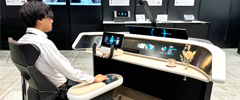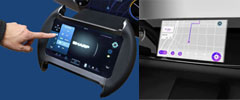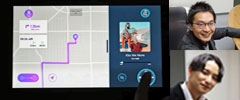What Is Texture Display That Blends Seamlessly into Interior Design? – Part 2 of Our Introduction to the Next-Generation Automotive Cockpit Solution
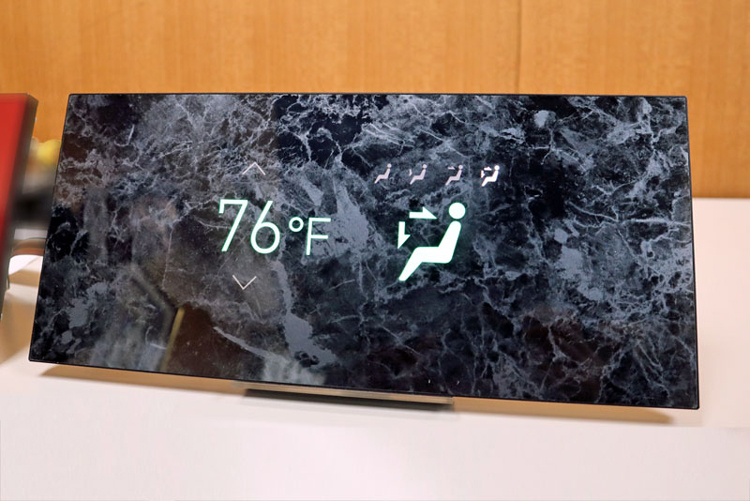
In the previous blog post, we introduced our overall concept of the Next-Generation Automotive Cockpit Solution (concept model).
This time, we’ll take a closer look at the displays used in this solution, focusing on the standout feature — the Texture Display. We spoke with Ueno in charge of the product planning and Watanabe and Yamamoto in charge of the engineering.
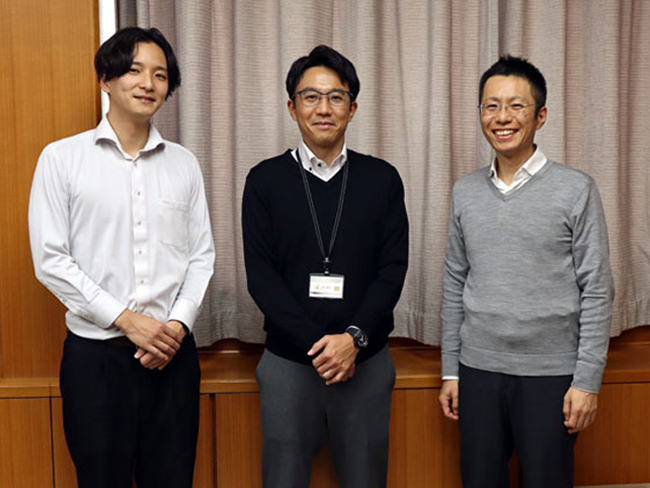
― What is the “Panorama Head-Up Display” used in the Next-Generation Automotive cockpit solution?
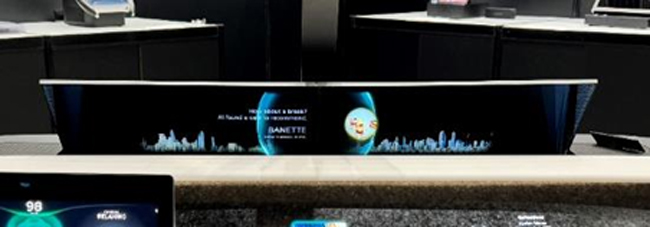

(Ueno)We project high-brightness images from a liquid crystal display embedded in the dashboard directly onto a specially black-coated area of the windshield. Unlike conventional systems that enlarge small display images, this method provides brighter, clearer, and larger visuals. Importantly, users do not see the actual display screen — the images appear as virtual projections.
Because the virtual image is perceived beyond the windshield, the driver doesn’t need to shift focus significantly, resulting in a more open and less oppressive cockpit experience.
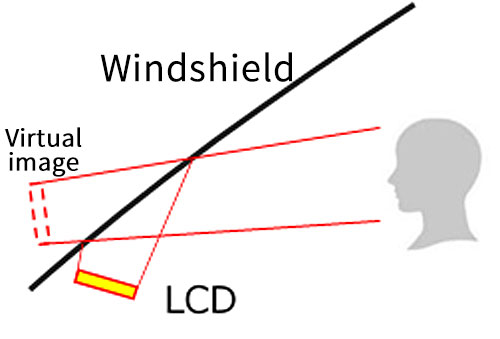
While other companies are also developing similar technology, Sharp has continued to improve this system beyond Tech-Day. We’ve now achieved LCD exceeding 5,000 nits*1 in brightness — resilient even in bright outdoor light.
*1 A unit of luminance that indicates the brightness level, defined as the amount of light emitted per unit area in a specific direction. It is an SI (International System of Units) standard, where 1 nit = 1 candela per square meter (cd/m²).
― The Click Display has been featured in our past blog — what has changed for this cockpit solution?

(Yamamoto)While the hardware configuration remains largely the same, we’ve made significant updates to the surface texture and software for improved usability. Originally, it supported functions like a D-pad, but we’ve now enabled dial-like rotational control. As you turn the dial, it provides tactile feedback — as if you’re turning a real mechanical dial. We paid close attention to replicating that sensation.We also added new vertical and horizontal slider bars that respond to finger swipes.
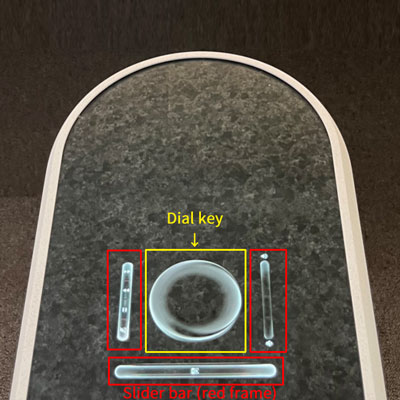
― Texture Display sounds like a very intriguing concept. Could you tell us more about it?

(Watanabe)By placing a specially printed, plate-like texture panel (such as film or glass) over the LCD panel, the display does not turn into a typical black screen when powered off. Instead, it appears as a wallpaper pattern or wood grain, allowing it to blend seamlessly with its surroundings and contribute to the overall aesthetic of the space.

When used in an in-vehicle environment, such as with the “Next-Generation Automotive Cockpit Solution,” the design can be freely customized to match the interior of the car. Of course, when powered ON, it can display various information as needed—such as driving assistance data, air conditioning settings, and audio controls.
― What inspired the development of Texture Display?

(Watanabe)With an increasing amount of information being displayed on screens, and the continued digitalization of vehicles, the volume of information displayed inside cars is growing year by year. As a result, the total display area in vehicle interiors has also been expanding. However, more displays can also create a sense of visual clutter and pressure. Moreover, when not in use, black screens negatively impact the aesthetics of the interior design. To address these issues from an interior design perspective, we began developing Texture Display—a screen that only displays information when necessary.
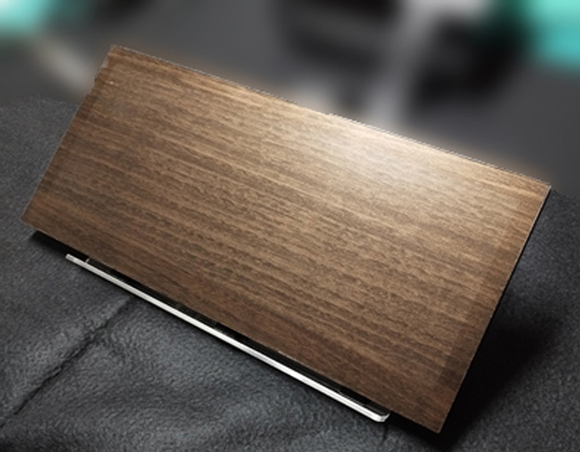
― What are the key features of Texture Display?

(Watanabe)There are three main features:
- ① When powered OFF, it provides the texture and appearance of wallpaper.
- ② When powered ON, it delivers bright and vivid images.
- ③ Its high transparency reduces power consumption and heat generation.
While ordinary wallpaper doesn’t allow images to pass through, our newly developed technology enables high-quality image display even with printed patterns, without interference.
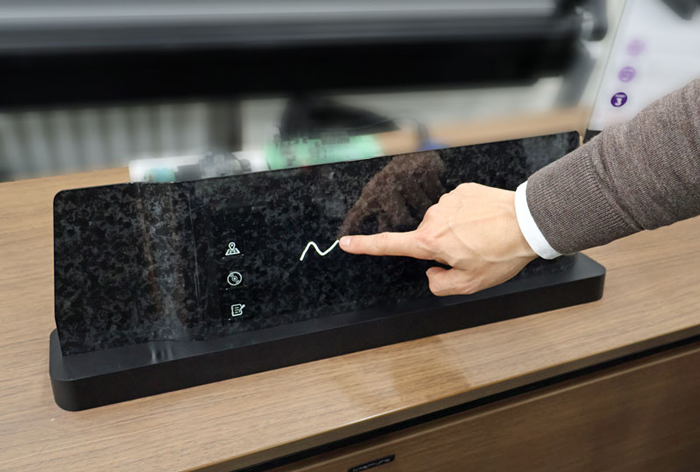
― What’s the secret behind its high transparency?

(Watanabe) We tested a wide range of inks and printing methods to find a structure for the texture panel that balances the look and feel of wallpaper with high light transmittance. While other companies are developing similar displays, Sharp’s Texture Display achieves an industry-leading transparency rate of approximately 70%*2 thanks to our proprietary structure.
With higher transparency, it becomes possible to achieve higher brightness and lower power consumption. Automotive displays need to be brighter than indoor ones because cars are exposed to more ambient light. That’s why high transparency, which allows for increased brightness and reduced heat generation, offers a major advantage for automotive applications.
*2 As of May 9, 2025, according to Sharp’s research.
― Tell us about any challenges or difficulties you faced during development.

(Watanabe)Initially, when turning the power ON, we found that the displayed images sometimes appeared slightly off in color or that the printed texture would show through. We resolved these issues by improving the ink and refining the printing patterns.

(Yamamoto)In addition, when we tried to implement “Click Display” functionality into the Texture Display, the pressure sensors in the touch panel sometimes caused unwanted color shifts. However, thanks to our extensive experience in display development and repeated fine-tuning, we managed to overcome this hurdle.
― Thank you very much.
This concludes our two-part series on “Next-Generation Automotive Cockpit Solution” and the displays used within it. As driving tasks continue to be automated, future vehicles will increasingly become spaces where passengers can simply relax and enjoy the ride. We hope you’ll look forward to the day when cars become seamless, living room-like spaces.
Also, the newly introduced Texture Display is not limited to automotive applications—it has great potential in home electronics as well. It’s an exciting device currently under development with the goal of early commercialization. Stay tuned for updates on its release.
(Public Relations H)
<Related Sites>
■Press Release :Sharp to hold Sharp Tech-Day ’24 Innovation Showcase
■SHARP Blog
Related articles
-
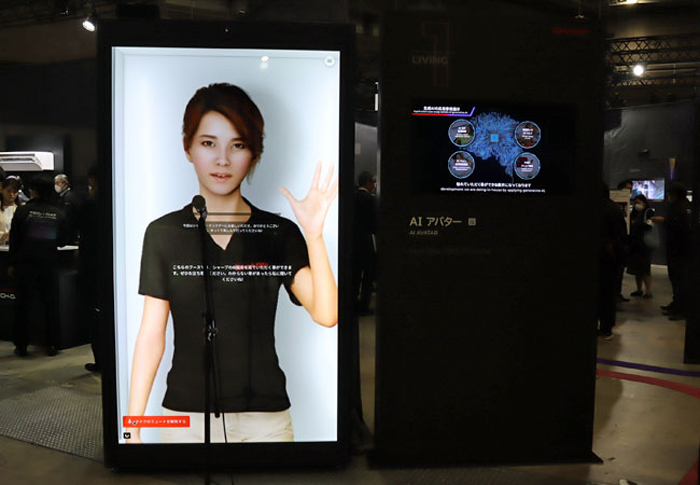 Talking freely with home appliances comes true? ~About CE-LLM : Sharp’s people-oriented edge AI technology~
March 28, 2024
Talking freely with home appliances comes true? ~About CE-LLM : Sharp’s people-oriented edge AI technology~
March 28, 2024
-
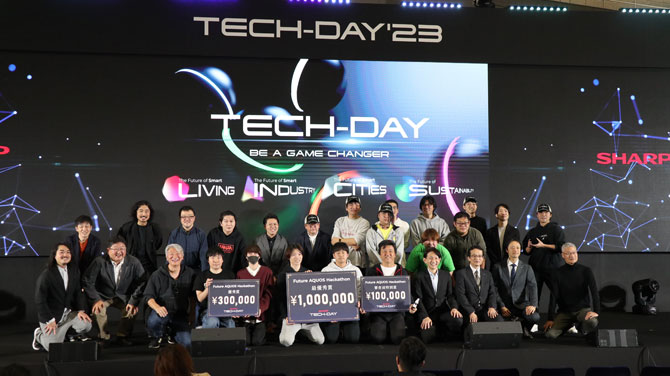 “TV in the near Future” Revealed at Hackathon Hosted by SHARP
November 21, 2023
“TV in the near Future” Revealed at Hackathon Hosted by SHARP
November 21, 2023
-
 SHARP Tech-Day is on! Experience the near future with Sharp’s latest technologies
November 10, 2023
SHARP Tech-Day is on! Experience the near future with Sharp’s latest technologies
November 10, 2023
-
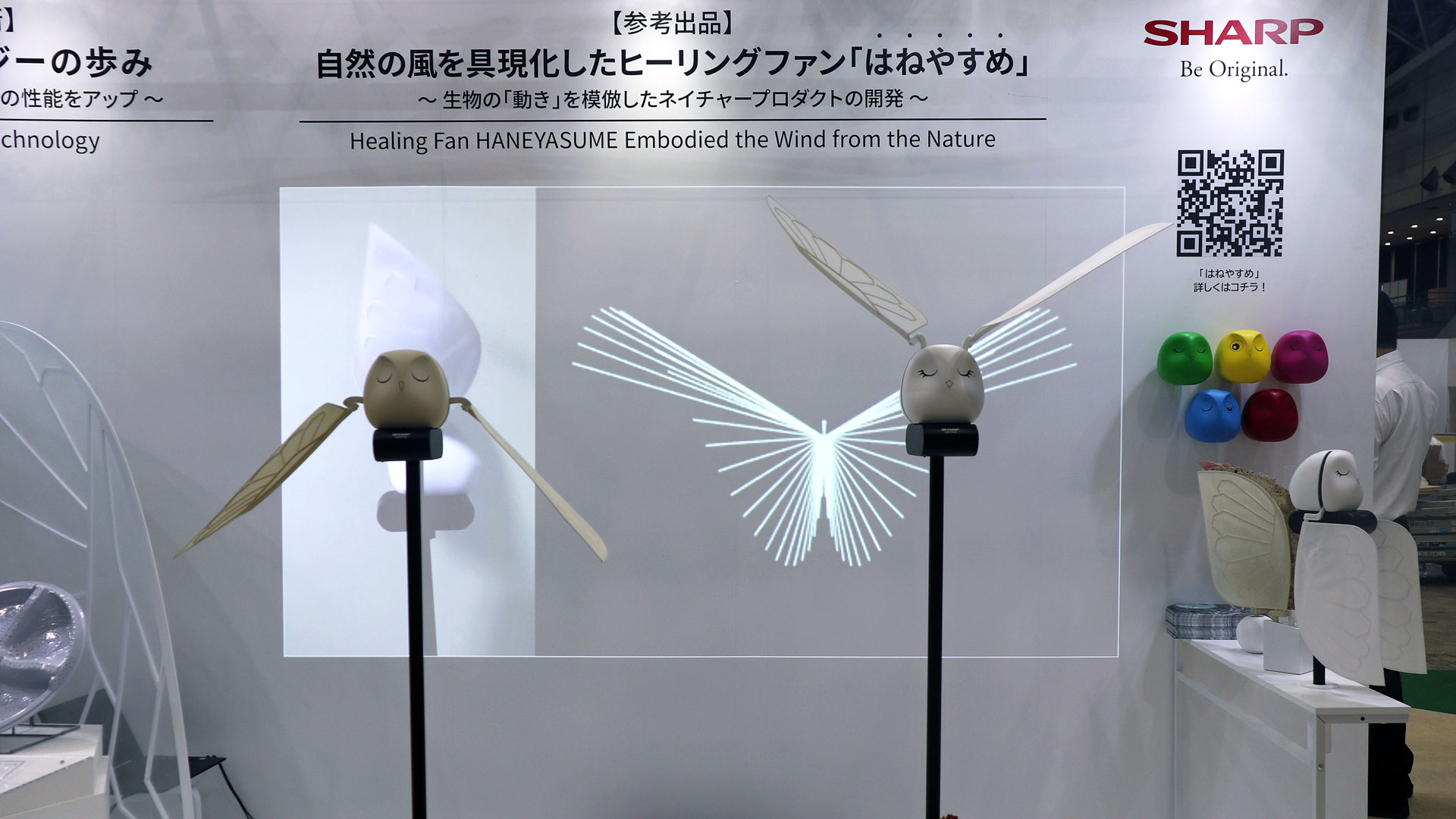 Sharp at CEATEC 2023! – Unique products such as Haneyasume and Click Display on Exhibit
October 19, 2023
Sharp at CEATEC 2023! – Unique products such as Haneyasume and Click Display on Exhibit
October 19, 2023
-
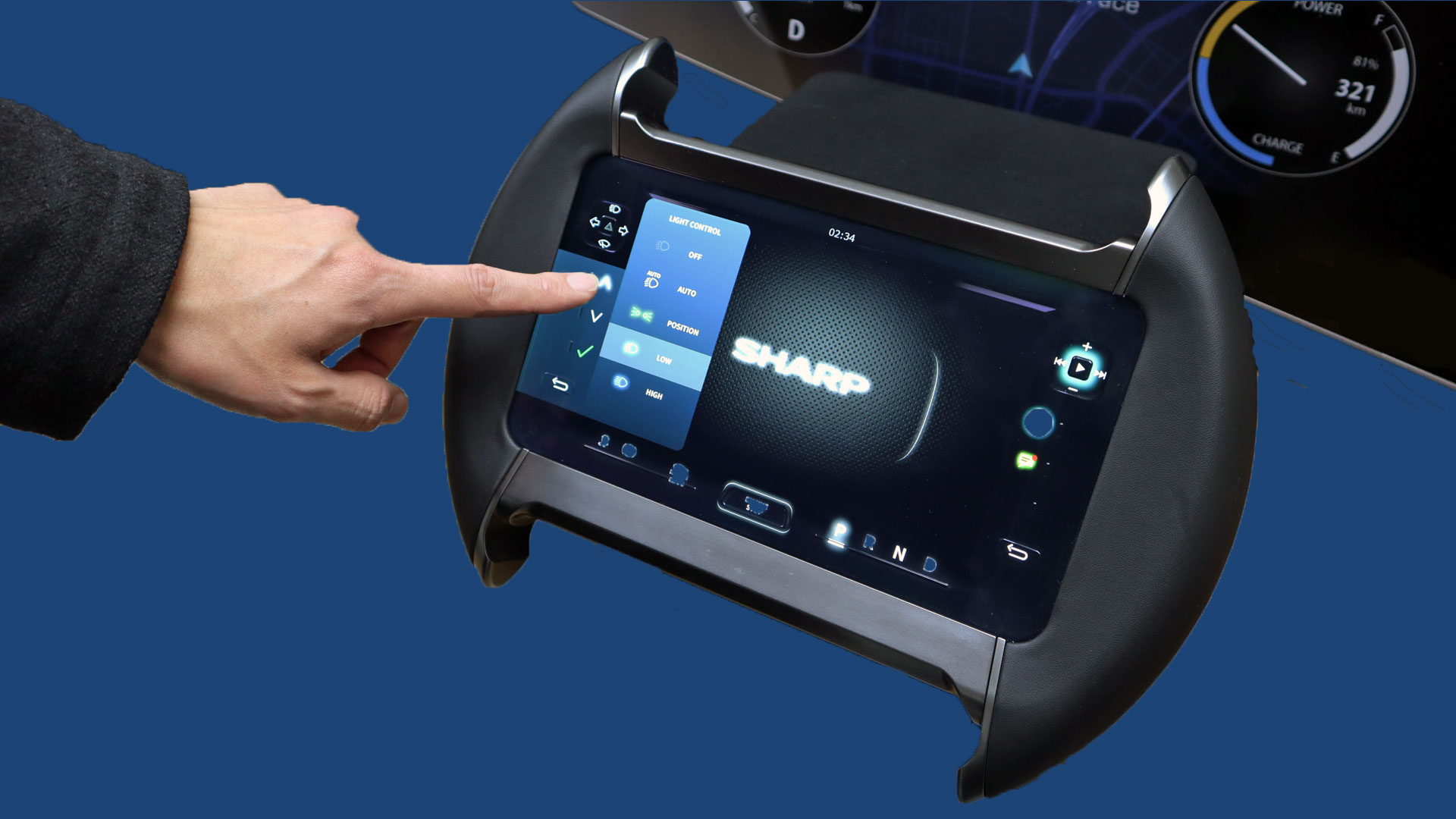 A click feeling as if you were pressing a button even if there is no button! What is the “Click Display”, a device of the near future? ①
April 14, 2023
A click feeling as if you were pressing a button even if there is no button! What is the “Click Display”, a device of the near future? ①
April 14, 2023
-
 “SHARP Tech-Forum” held with the theme of Semiconductors – a preliminary event of “SHARP Tech Day”
August 9, 2023
“SHARP Tech-Forum” held with the theme of Semiconductors – a preliminary event of “SHARP Tech Day”
August 9, 2023
-
 Sharp commemorates its 111th anniversary – “Sharp Technology Day” will be held on November 11, 2023
April 25, 2023
Sharp commemorates its 111th anniversary – “Sharp Technology Day” will be held on November 11, 2023
April 25, 2023
-
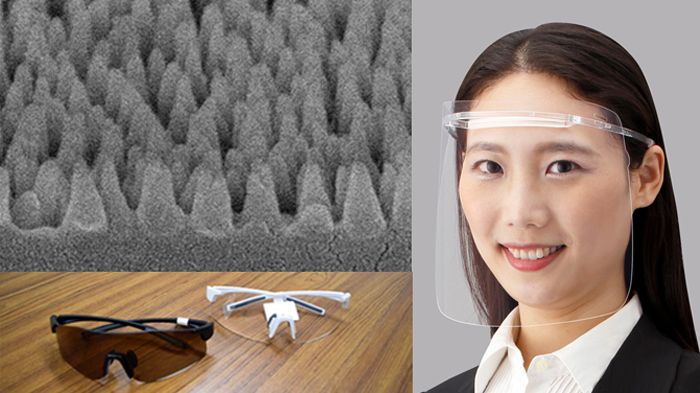 Sharp’s Moth-eye technology is a unique and advanced technology that is more than just low reflection
August 20, 2024
Sharp’s Moth-eye technology is a unique and advanced technology that is more than just low reflection
August 20, 2024
-
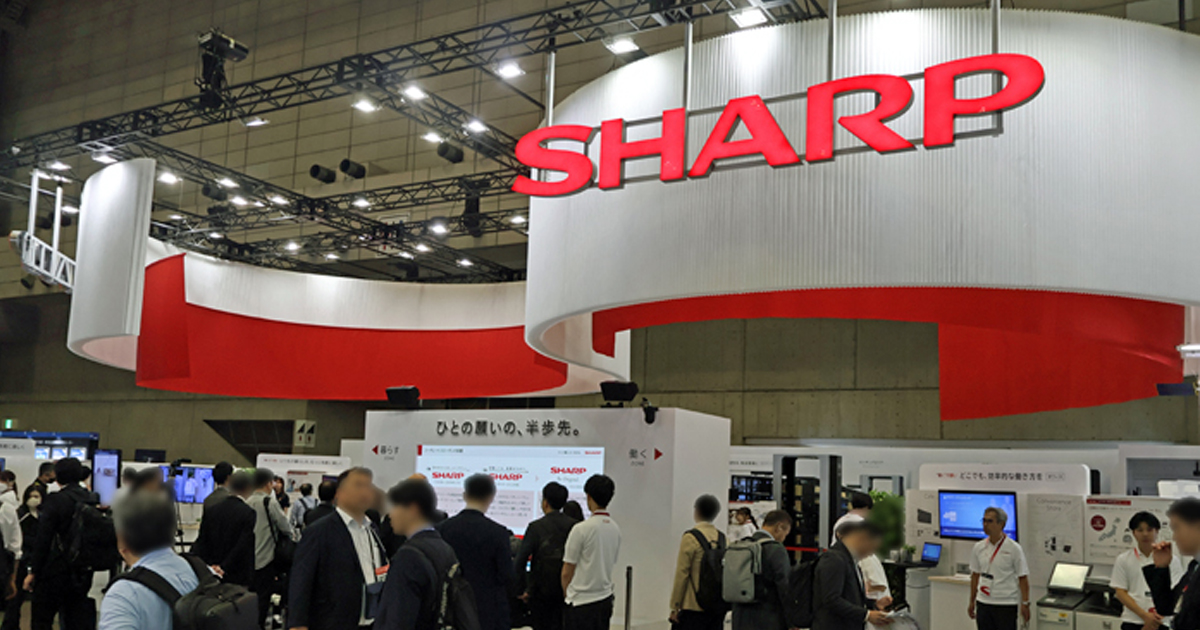 Exhibiting at CEATEC 2025 – Showcasing Sharp’s Initiatives to Bring Its New Corporate Slogan to Life
October 15, 2025
Exhibiting at CEATEC 2025 – Showcasing Sharp’s Initiatives to Bring Its New Corporate Slogan to Life
October 15, 2025
-
 Inspired by Display Structure? AI Olfactory Sensor Development ②
February 6, 2024
Inspired by Display Structure? AI Olfactory Sensor Development ②
February 6, 2024
